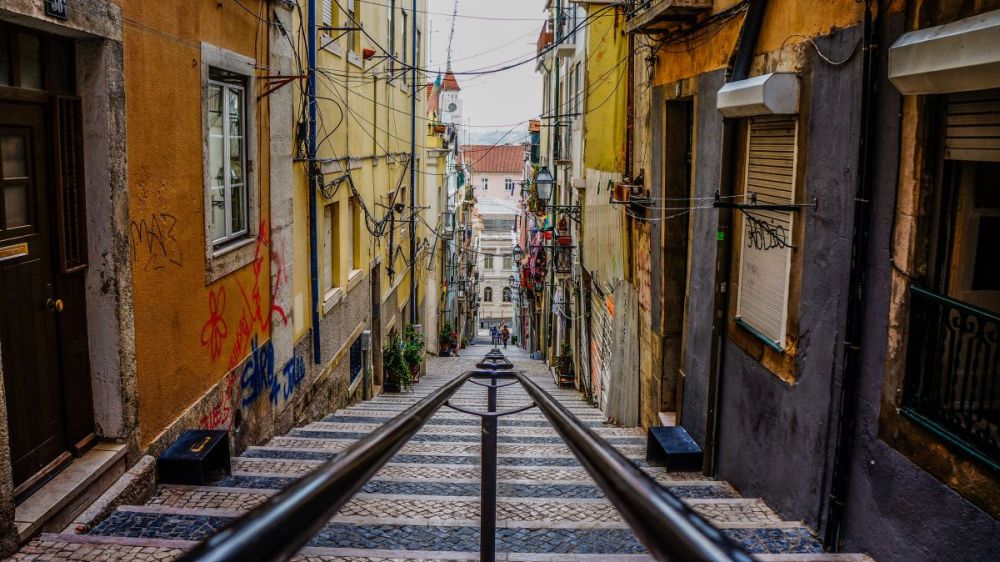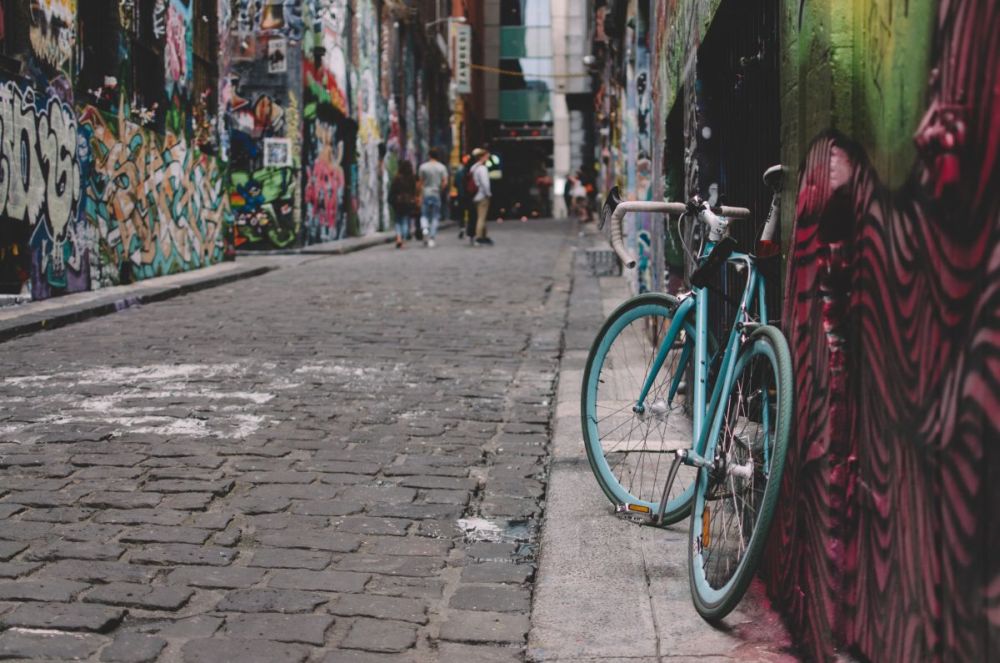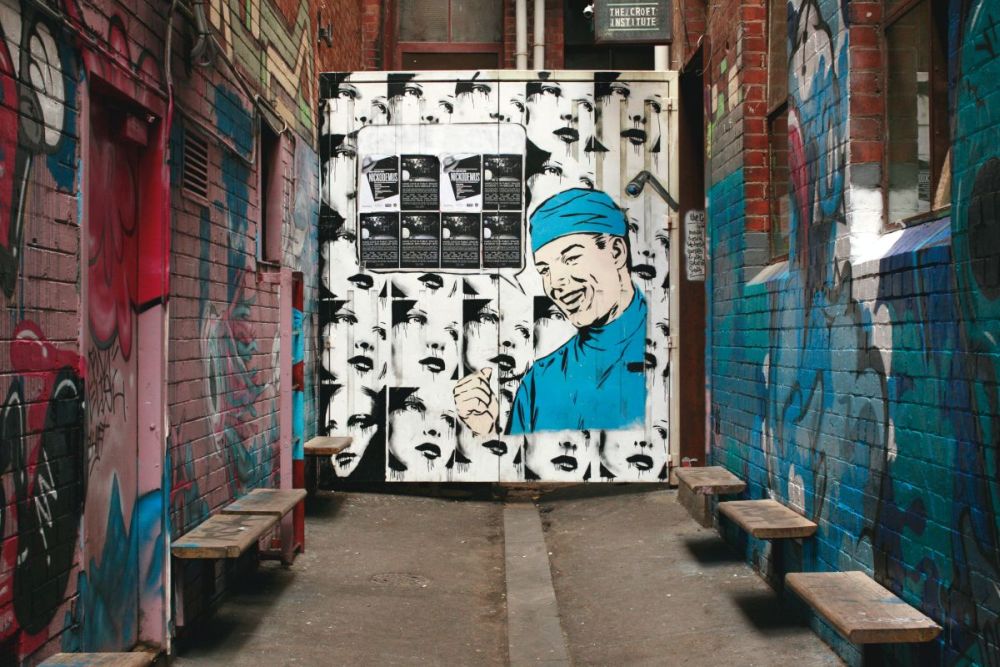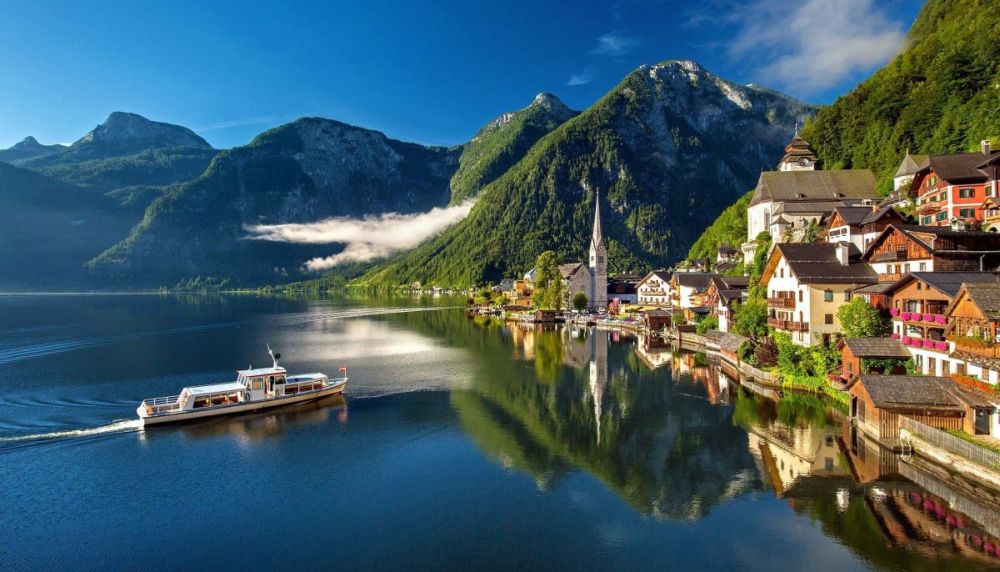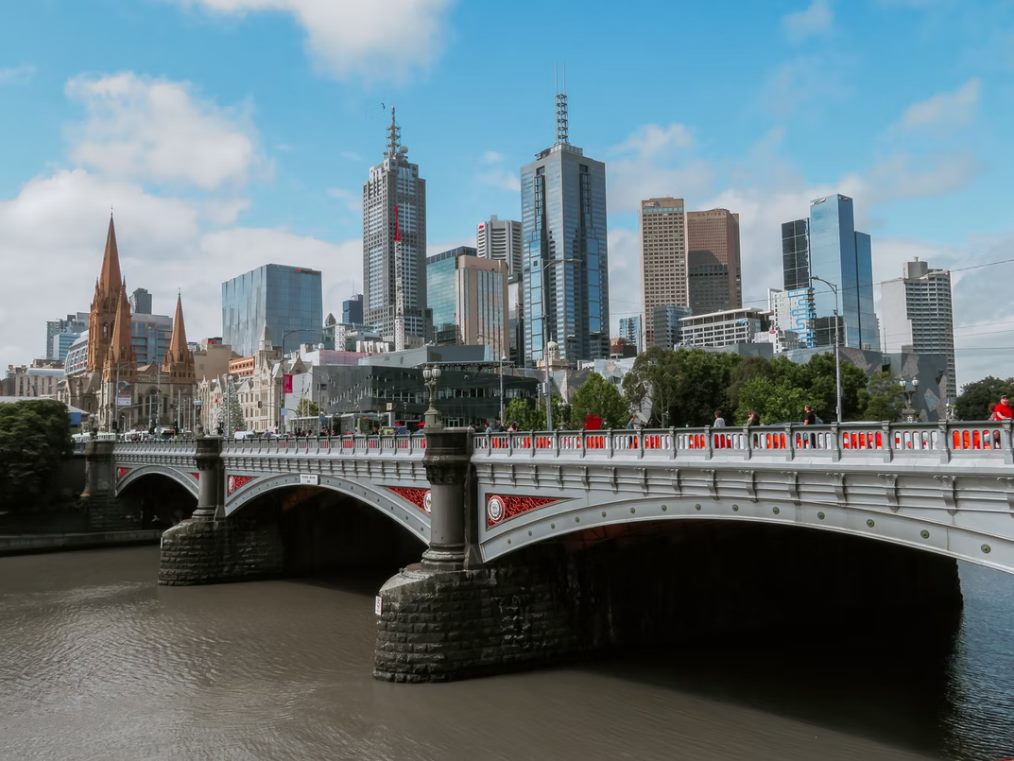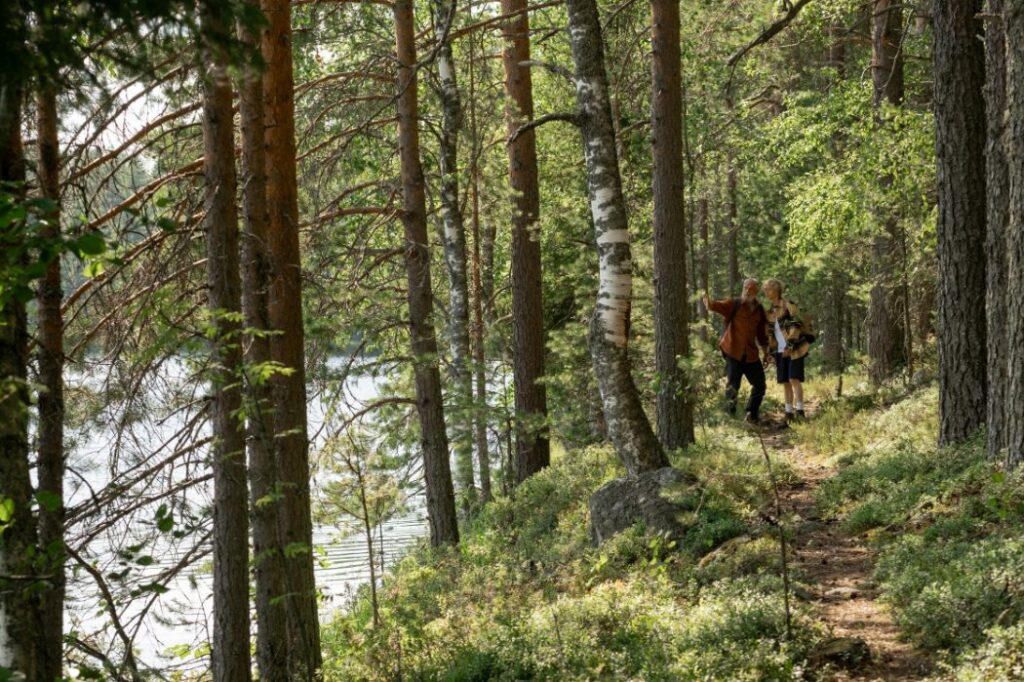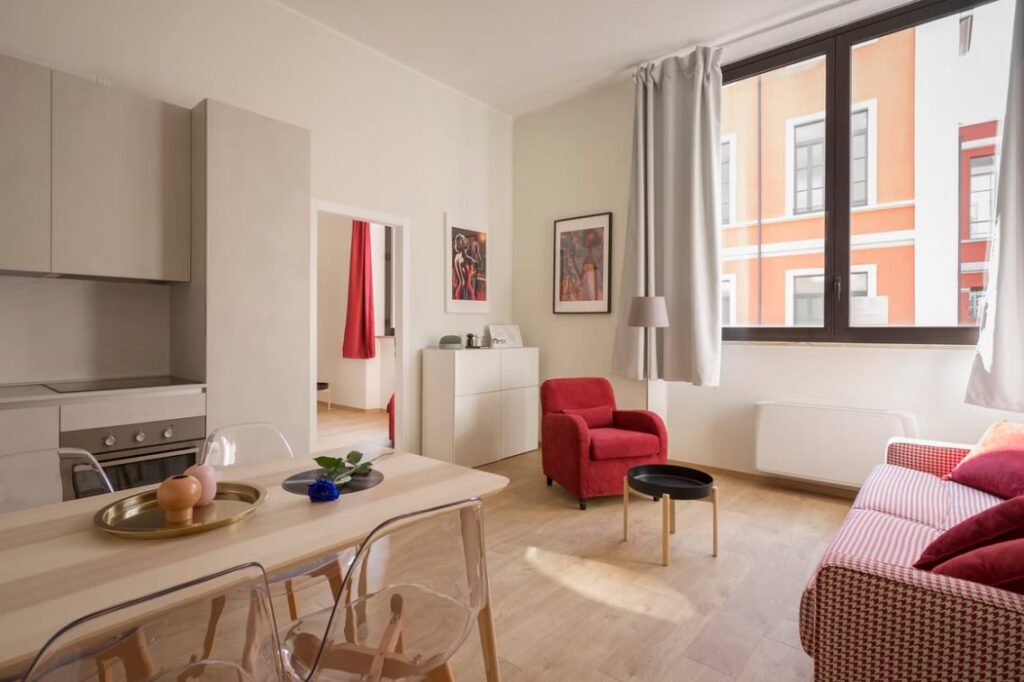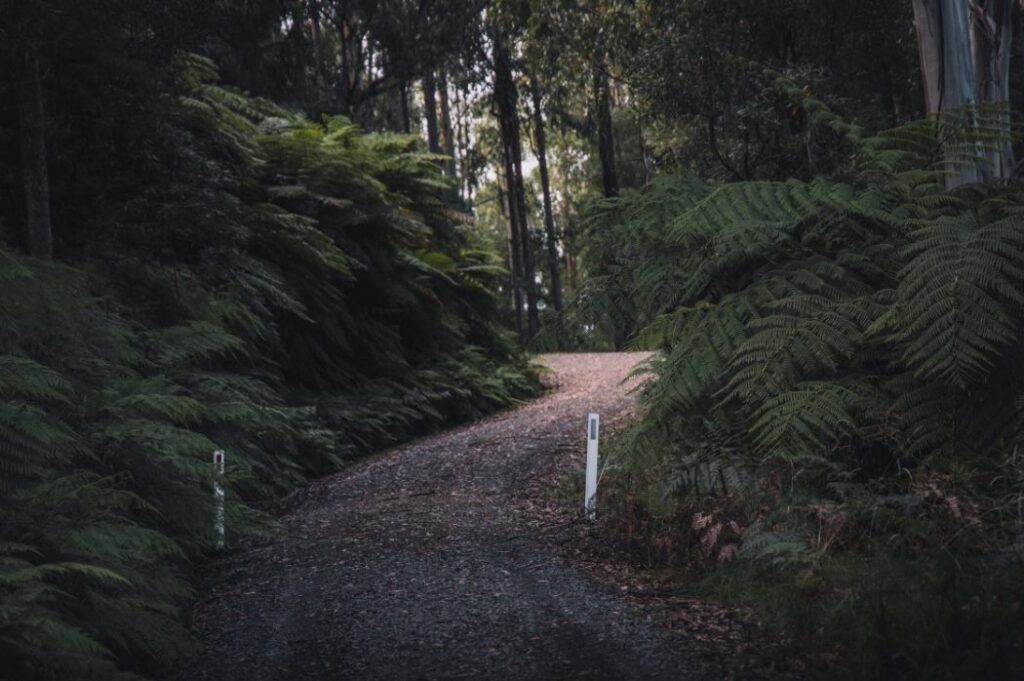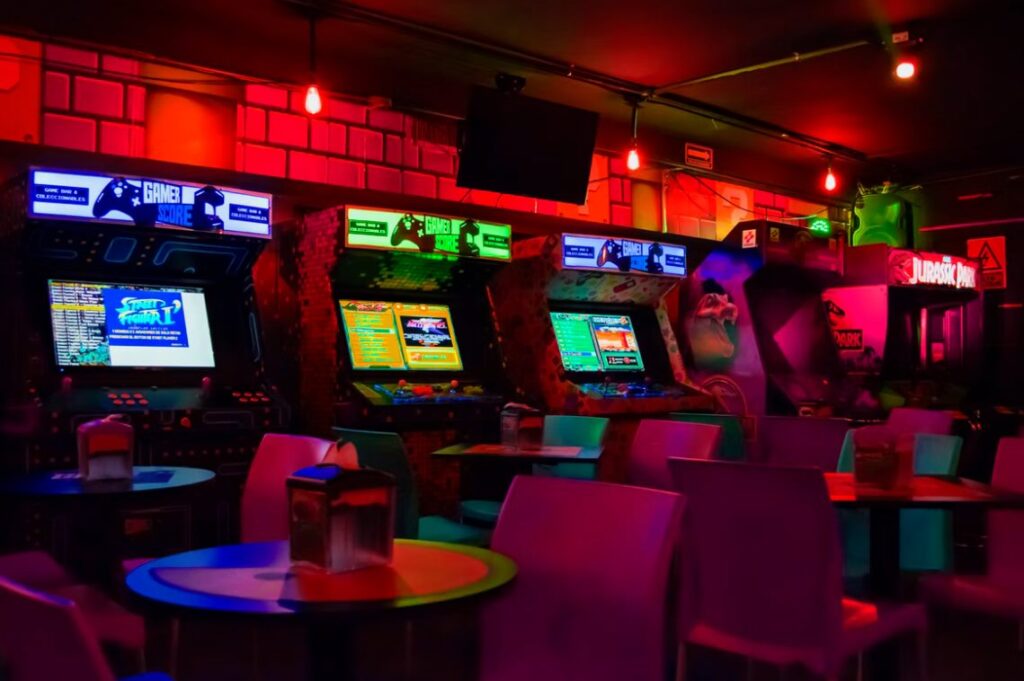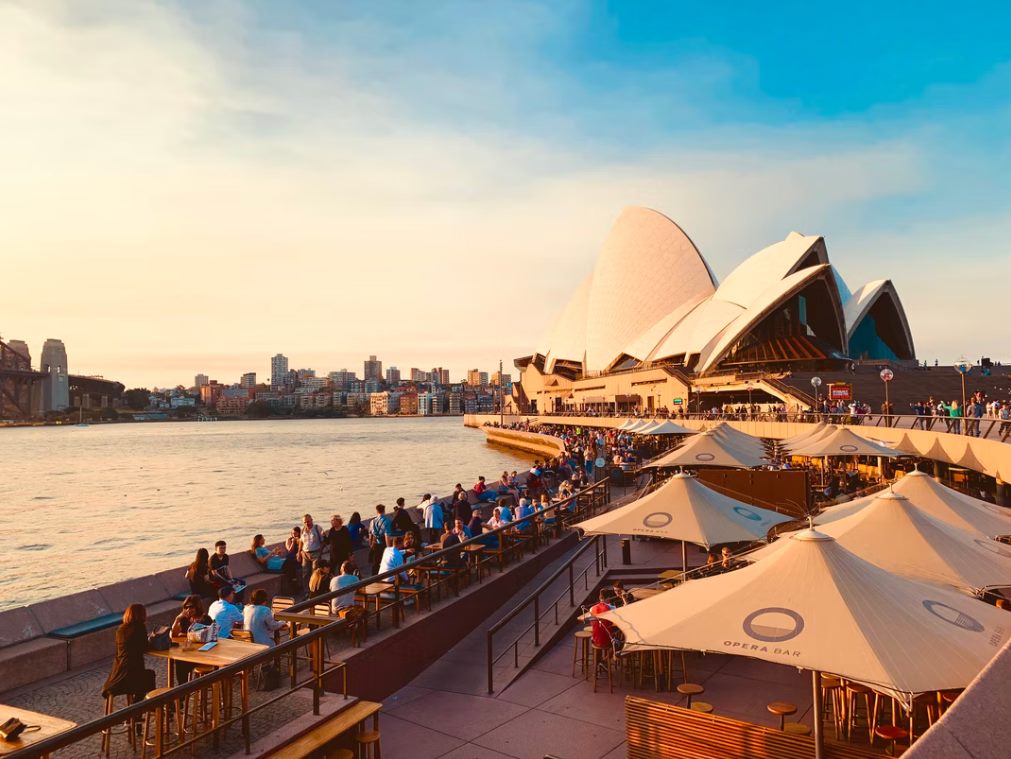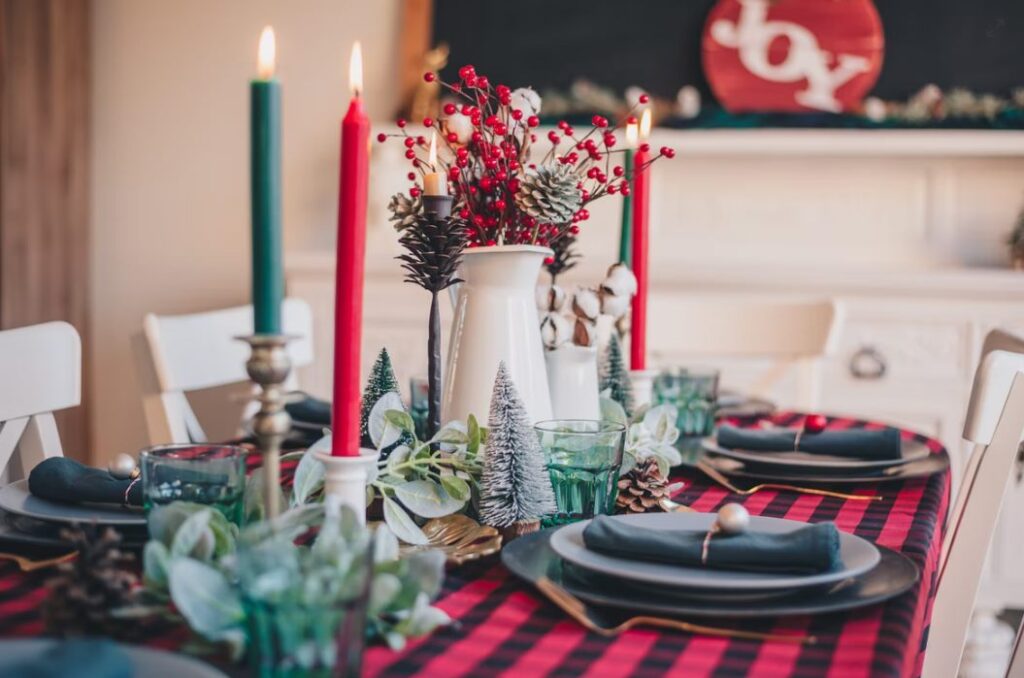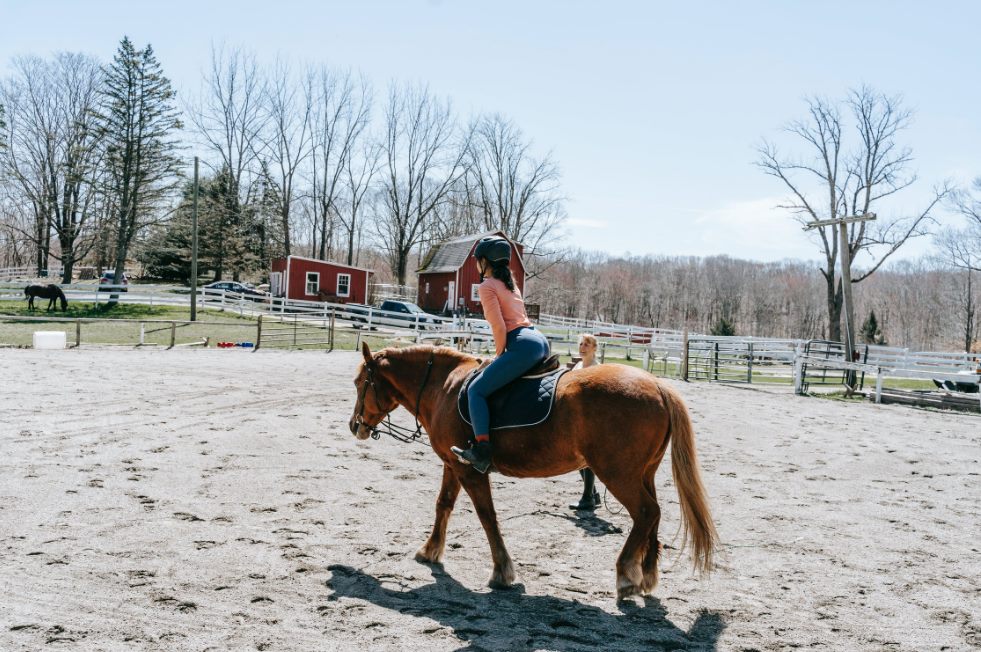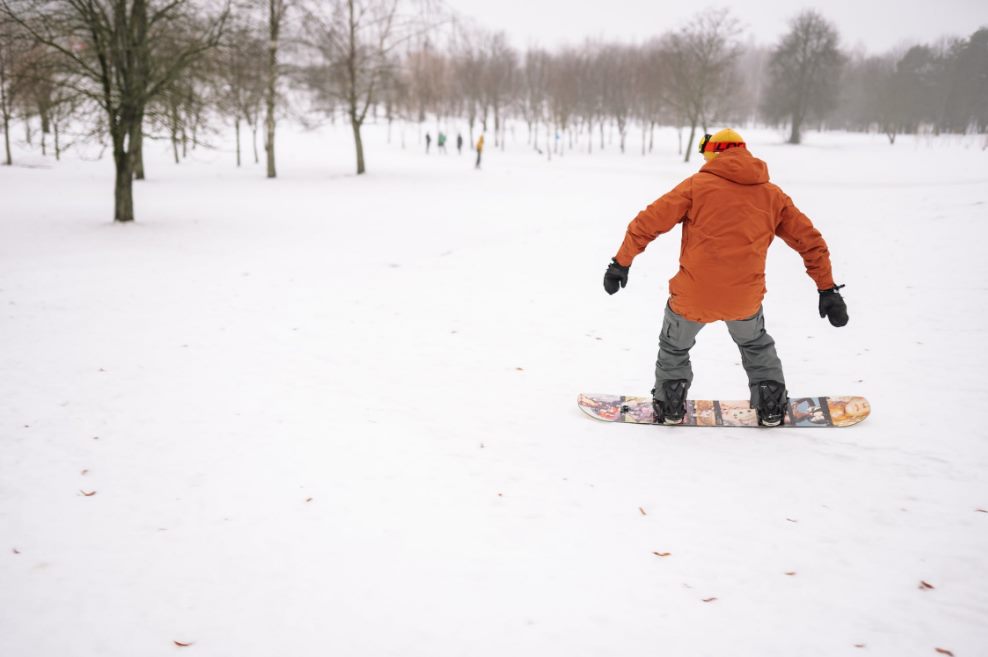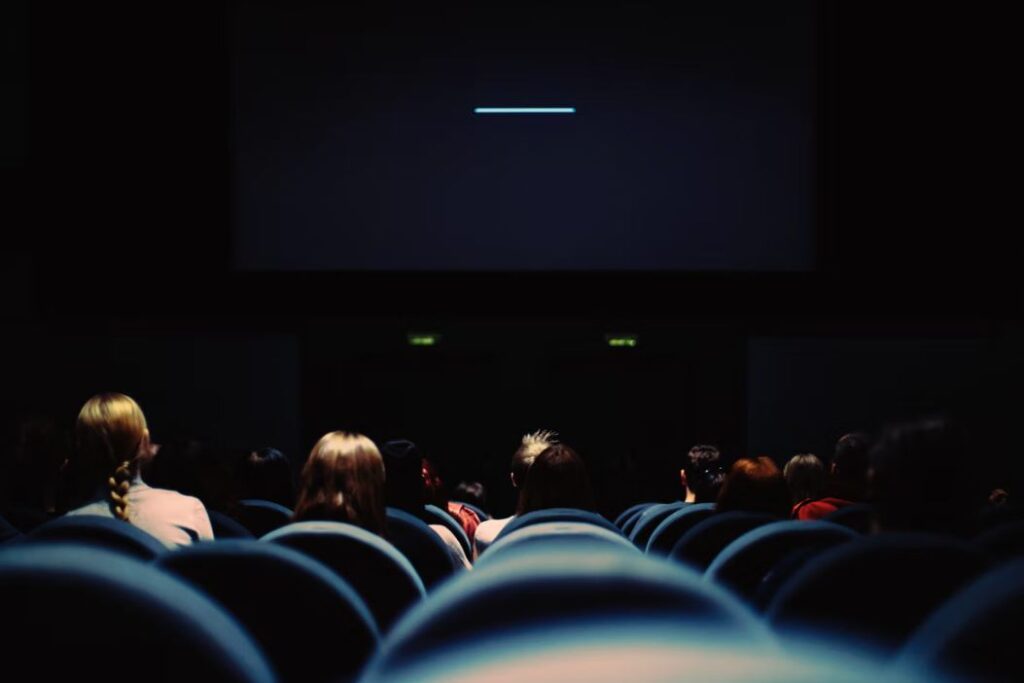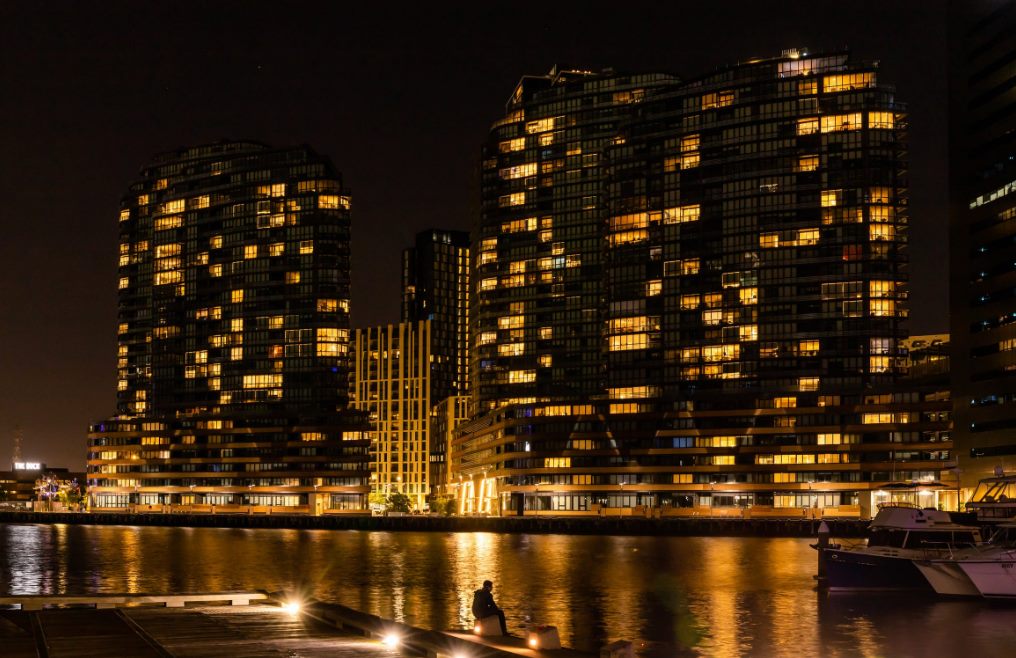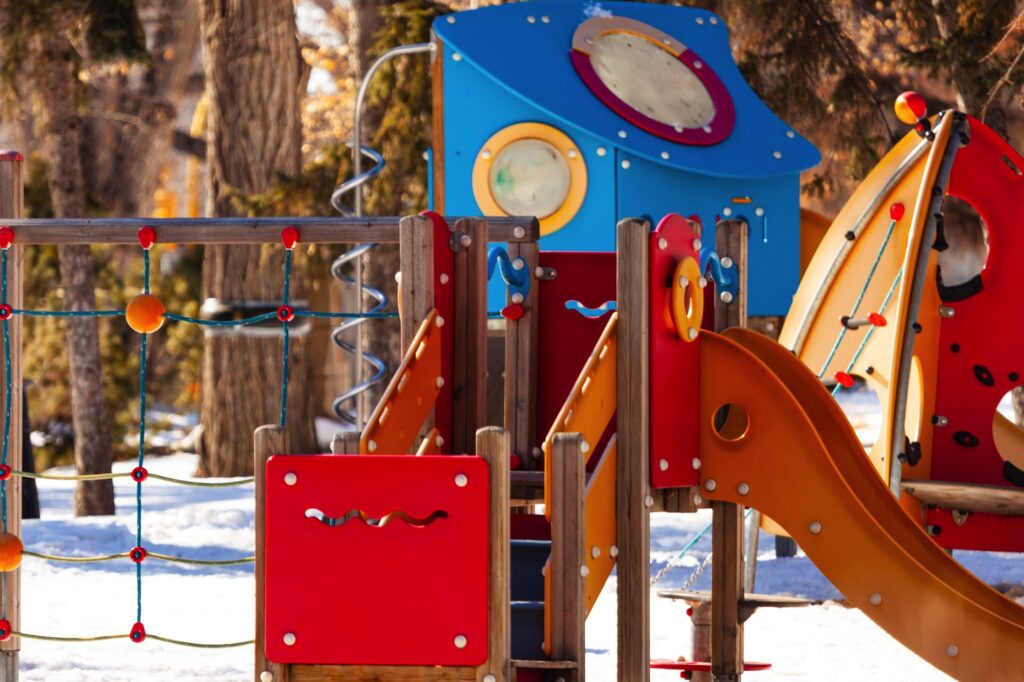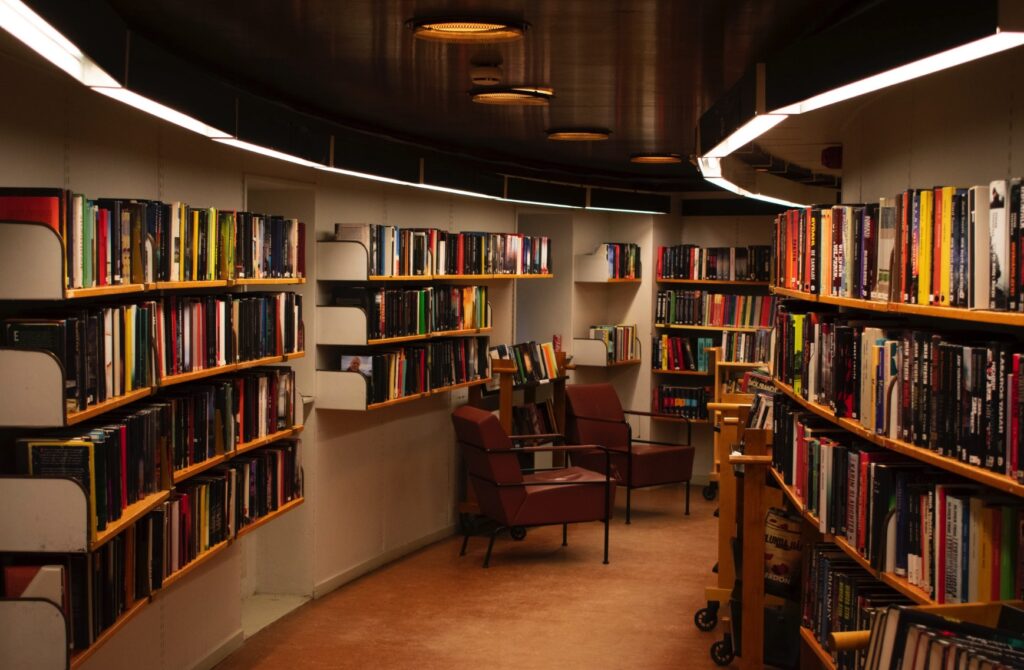Many visitors come to Melbourne just to explore the city's famed "laneways," which are noted for their enchantment and anonymity. They feature interesting shops, galleries, and street art in addition to restaurants and pubs. Amazing street art can be found just about anywhere in Melbourne. Due to the efforts of numerous local and international street artists, the city's dark and dreary maze of alleyways has been brought to vibrant life with colour.
Paste-ups, mural paintings, and graffiti art are just some examples of the wonderful creativity that can be found lurking around every corner in Australia, and many of the country's most renowned painters actually got their start on the street before finding success in white-walled galleries. Because of its stellar reputation among artists all over the world, Melbourne has emerged as a centre of underground artistic production.
However, there are a few select laneways and sites throughout the city where you may see many of these fantastic artworks up up and personal. If you're ever in Melbourne for business or vacation, consider staying at the five-star Fraser Suites Melbourne and exploring the city on foot.
The Best Laneways In Melbourne
Melbourne's vibrant laneways have an Alice in Wonderland vibe to them, with surprises around every turn. A brilliant cook may be reimagining Indian classics, or you might find a cobbler making custom shoes. Only one thing can be said with any degree of certainty: each time you visit, you will learn something new. So, if you want to make the most of your time in the laneways, be sure to check off some of these lesser-known destinations.
Hosier Lane
Hosier Lane is without a doubt the most well-known spot on this list to see graffiti art, and it has played a crucial role in the development and maintenance of Melbourne's spectacular street-art culture. Hosier Lane is your best chance if you want to witness some of these outstanding performers in action, since they perform there constantly throughout the day and night, right opposite the busy tourist icons of Federation Square and Flinders Street.
Simply walking along Hosier Lane will reveal the extent to which the area has been covered in paintings and paste-ups. It is also home to some of the city's most well-known pieces of street art.
Don't miss Adnate's famous mural depicting a young Indigenous kid, who has no name. At 23 metres in height, it is hard to miss, so bring your camera and record the work as it surveys Birrarung Marr Park and the neighbourhood.
In Melbourne, no laneway is more popular than Hosier Lane. It has become the iconic representation of Melbourne's laneway culture thanks to its frequent inclusion in promotional materials. Tourists come here in search of the best photo op among the always evolving street art. The most eye-catching piece, however, is located 50 metres (164 feet) up on the side of a business centre. Adnate, a local artist, painted this unforgettable image of a native boy.
Movida and Bar Tini, both on Hosier Lane and owned by the same company, serve authentic Spanish tapas. The term "commercial" best describes Hosier Lane, Melbourne's busiest lane. Nonetheless, it is simple to mark off your list because of its convenient placement directly across from Federation Square.
Meyers Place
Very few Melbourne laneways can pack in as many high-quality establishments as Meyer's Place, so each time you go there will be a new and exciting adventure. Stroll on down to San Telmo, an authentic Argentinian steakhouse featuring a parrilla charcoal barbeque. After that, stop in at Lily Blacks for some drinks—and it's an art deco bar with a classic cocktail menu. Loop Bar has a two-story rooftop that you might check out. Or, stop into Pizza Pizza Pizza for a piece of New York and a drink at their hidden speakeasy. Meyer's Place was an early contender for the council's Green Laneway initiative, so be sure to look up to see the vertical garden that hangs above Loop.
Degraves Street
Another well-known and much-loved area of Melbourne, Degraves Street is renowned for its eclectic and creative cafe culture. When you visit during the day, the area is crowded with chairs and cafe canopies, giving it a really Parisian atmosphere. Hobart's early entrepreneurs Charles and William Degraves constructed a flour mill near the intersection of Flinders Lane and Degraves Street in 1849, hence the street's namesake. In addition to the cafes, there is Pidapippo, which offers a wide selection of traditional Italian Gelato and a Nutella fountain. To round out your souvenir shopping in Melbourne, stop by Clementine's, a gourmet food and gift shop that sells exclusively items created in the state of Victoria.
FAQs About Laneways In Melbourne
Melbourne laneway tours involve quite a bit of walking, so you’ll want to be wearing comfy shoes. One of the best things about walking tours in Melbourne is that they pass by so many cafes and coffee spots. If you’re in a group, it can be hard to stop at will, so make sure you bring along a bottle of water and, if it’s sunny, a hat.
When the weather (and restrictions) permit, we recommend getting out and exploring Melbourne on foot. But if you think the main streets are passé, we've got good news: you can traverse a good part of Melbourne CBD via laneway, without ever setting foot on a street in the Hoddle Grid.
Yes, Hosier Lane is the most ‘commercial’ laneway in Melbourne. But due to its central location just across from Federation Square, – it’s super easy to check off your bucket list. As a result, Hosier Lane is the darling of the Melbourne laneway scene. Regularly featured in tourism campaigns, it's come to symbolise Melbourne's entire laneway scene.
The laneways, which were pleasingly intimate in scale and tucked away from the busier streets, became famous for their street art around the time the city began to gentrify around the 1990s. As a result, these laneways are now highly popular locations for shops, restaurants, bars, tourists and residents.
Many people consider alleyways an ever-evolving outdoor art museum that displays street art. Explore the city and look for murals, paste-ups, and stencils in alleys that have been gentrified as well as more run-down areas. Meyers Place features the enormous living wall created by Melbourne artist Mike Makatron.
Centre Place
Centre Place is the original and still the most eccentric of Melbourne's laneways; it could pass for Diagon Alley in the Harry Potter movies. It was the first laneway in Melbourne to be renovated in the 1980s and is now considered to be a signature feature of the city. Cafes serving baguettes, soups, dumplings, and smoothies line the dark and tight laneway. We highly recommend both Shandong Mama Mini and Jungle Juice. We're not joking when we say that the best place to people-watch is from atop a milk crate, so go ahead and grab a bite to eat and settle in. One could even get a busker to serenade them with music.
Duckboard Place
If you keep going down ACDC Lane, you'll eventually come to yet another great area for graffiti. Duckboard Place is flanked by several of Melbourne's best restaurants, including Eau De Vie, Chin Chin, and Lee Ho Fook, to name a few.
The restaurants in this region of Melbourne's inner city are among the city's most popular, drawing crowds that regularly stretch out the door. There is plenty of street art to look at, including murals that extend all the way to the roofs, so at least you'll have something to do while you wait. The most striking feature of Duckboard Place, though, is the towering painting of flowers and butterflies that serves as its backdrop.
From Flinders Lane, you can take a horseshoe-shaped diversion via Duckboard Place and ACDC Lane, which are connected to each other. In 1953, the slatted timber path set out in the muddy trenches was given the name "duckboard" after the nearby Duckboard House, where the troops would gather for entertainment during the interwar period.
While Duckboard Place isn't as interesting as ACDC Lane, it does have Melbourne's last extant Banksy. Unfortunately, most of the street art painted by Banksy in the early 2000s has been vandalised or stolen. Parachuting rat stencils by Banksy remain, however, at the end of Duckboard Place, one on either side of the rounded entryway. Another piece by Banksy may be seen on the ceiling of Melbourne's most notorious nightclub, Revolver, located on Chapel St.
Hardware Lane
The long (and lively) Hardware Lane connects Bourke and Little Lonsdale streets. Kirk's Horse Bazaar, an auction shop that used to sell hundreds of horses every week, once stood on the site. Numerous Italian and Spanish establishments contribute to the area's already strong European vibe and distinctive red pavement. Most eateries will have a salesperson standing outside, eager to earn your business. You can either try to negotiate a lower price with them or save yourself the hassle by doing some preliminary research on your travel destination before you leave.
Market Lane
From the large Bourke Street, Market Lane leads you into the narrow alleyways of Chinatown. Hutong, a well-respected dumpling restaurant, is just one of several eateries that line this alley. You can see the chefs creating the dumplings, which is a fantastic method to make sure they aren't frozen.
Hofbräuhaus, a somewhat out-of-place German restaurant famous for its enormous sausages and beers, is also available. This place becomes absolutely nuts during Octoberfest. Flowerdrum is a Michelin-starred Cantonese restaurant that is frequently filled up months in advance and is the place to go if you're looking for great cuisine.
Nature In The City
While many of Melbourne's alleys exude an artsy, alternative air, one laneway has brought some much-needed green to an otherwise dark passage.Through the "Green Your Laneways" campaign, Guildford Lane was reclaimed as a green area.
The cafes inside the urban oasis are just as relaxing. Krimper, for instance, offers a cuisine with robust yet contemporary breakfast and lunch selections, and tables fashioned from repurposed elevator doors. At the same time, as the name suggests, the Cat Café Melbourne is home to rescued cats who are allowed to roam the entire two-story building.
ACDC Lane
This little street was given the name AC/DC Lane in 2004 to honour one of Australia's most famous rock bands. It's appropriate, given this area is home to several of Melbourne's legendary rocker bars, which collectively showcase the city's rich heritage of underground music and nightlife.
The rock and roll legends Angus Young, Prince, and Jimi Hendrix are frequently depicted in the street art here, which is in keeping with its near surroundings. While there have been some improvements to the area over the years, it still has the same shabby charm that is so characteristic of Melbourne and its rich creative history. Ha-Ha, alias Regan Tamanui, a New Zealand stencil artist whose work has been exhibited across the world, is known to have a soft spot for ACDC Lane.
Check out his famous paste-ups, which may cover entire walls, and see if you can spot any pop culture allusions. One of the world's finest rock 'n' roll bands, AC/DC, had its start in a St. Kilda shared house. The It's a long road to the top music video was shot in 1976 on Swanston St. They need no introduction as Melbourne landmarks.
This alleyway, formerly known as "Corporation Lane," was rechristened "ACDC Lane" in the early 2000s. It has recently become a mecca for urban art and high-end eating. A three-dimensional installation depicting Bon Scott seemingly "bursting" through a wall of bricks may be found among the spray-painted tags. There's also a mural of a young man carrying a tree that stretches over 30 metres. Pastuso (Peruvian), Tonka (contemporary Indian), and Hereford Beefstouw (Australian) are just a few of the dining options (Danish Steakhouse.)
Garden In The Sky
This branch off of the renowned Loop Art Space is almost as well-known as its parent institution. Loop Roof is a leafy refuge with a magnificent perspective of the city skyline, and it may be reached by ascending the steep stairway at Meyers Place. Keeping with the garden motif, there is a corresponding drink menu. The house juleps come in a wide variety of flavours, from herbaceous (cucumber, dill, and capsicum) to earthy (beetroot & walnut).
Tattersalls Lane
Tattersall's Lane connects the northern part of the city with Chinatown. Just entering this centre of nightlife is like entering another world. Somewhere around the middle is Section 8, one of the many 24/7 laneway pubs in Melbourne. It started as a temporary bar in a parking lot, but due to its success, it was made a regular part of the neighbourhood. Their counterpart, the more traditional but nonetheless hipster FerdyDurke, can be found right next door.
Liverpool Street
This alleyway, once known as Juliet Terrace, was a prominent feature of the red-light area in the early 19th century. Now more than ever, people flock to Liverpool Street to eat and drink. The Southeast Asian restaurant Rice Paper Scissors is popular for its no-reservations policy, while SPQR is renowned for its genuine Neapolitan pizza. After you've finished eating, head to the unmarked door with the rusty bicycle dangling above it. Get a drink at New Golden Mountain, so just push the door open and go up there. It was during the 1851 gold rush that Chinese immigrants began referring to Victoria as "New Gold Mountain," which is where the bar gets its Asian/Australian theme.
Crossley Street
Pellegrini's on the intersection of Crossley Street is where the neighbourhood meets. This classic Italian cafe is credited with introducing Melbourne to its first Espresso machine in 1954, thereby kicking off the city's coffee revolution. The cafe has been a favourite among locals since it first opened in 1954; the design and food are both reminiscent of a bygone era. Local legend has it that an opium den formerly operated on what is now Crossley Street, which was formerly known as Romeo Lane and was a part of the red-light area. Romeo Lane, like many other laneways, conceals a cocktail bar, this one a cosy sipping hole with a little courtyard named for the previous occupants of the building at the intersection of Crossley St and Romeo Lane.
Caledonian Lane
However, despite its diminutive size, Caledonian Lane has earned a solid reputation through the years. For one thing, it was the original site of the St. Jerome's Laneway Festival. From this narrow alleyway, this big music display expanded into what is now a worldwide phenomenon. While the amount of art that can be seen at this location off Lonsdale Street has been diminished by new construction, it is still well worth your time if you are wandering Melbourne's labyrinthine streets. After a long day of exploring the city, you'll be relieved to hear that there are plenty of great bars and coffee shops in the area to rest your weary feet.
Johnston Street
When thinking of Melbourne neighbourhoods that epitomise the city's artistic vibe, you can't go wrong with the inner-northern Fitzroy district. The trendy shops, cafes, and restaurants here are all well-known, but the city's streets also feature a number of impressive works of art. We could mention a number of great murals in the area, but two in particular, both located on Johnston Street, are well worth venturing out of the central business district to see.
The first is the "Everfresh Fitzroy mural" on the building's exterior of the well-known nightclub The Night Cat. Welcome to Sunny Fitzroy! is a piece of street art painted by the well-known Everfresh crew. You can find a mural by the iconic New York artist and pop-culture figure at the entrance to Melbourne's beloved Spiegeltent, which is worth a trip in its own right if you're in the area.
The mural, which Haring painted in 1984 when he was invited to Melbourne, has since become an iconic symbol of the city and its residents. Just a short stroll from Fraser Place Melbourne will take you to some of the city's best laneways, which are home to a varied assortment of murals. Visit Melbourne and immerse yourself in the city's vibrant underground culture as you explore the city's many vibrant and unique neighbourhoods.
Russell Place
Charles Elliot, a local merchant and resident of Russell Place, wrote to the city council in 1890 to ask for more lighting on the streets and more police patrols. He said that sometimes as many as twenty men would urinate in the alleyway. Fortunately, we no longer live in those times or, at the very least, not as much.) Several establishments, such as Gin Palace and the 24-hour Bar Ampere, may now be found on Russell Place. They both have bathrooms, which is great.
Guildford Lane
Hidden away between ultra-modern high-rises is the peaceful refuge of Guildford Lane. The city's "Green Your Laneway Campaign" has resulted in the red brick walls of this unique cluster of factories being overtaken by vegetation. Most of the structures have been turned into apartments, however, there remain a few eateries on the ground floor, including the trendy Bricklane and Krimper. It is also the site of Australia's first cat cafe, where, for a modest price, visitors may relax in the company of loving felines.
Some of the best places to see incredible street art are included here. Melbourne's laneways have developed spontaneously and on their own since the 1980s. So, without further ado, here is the ultimate guide to Melbourne's coolest alleys. Gather your equipment and go on an adventure.
Conclusion
Melbourne's laneways are like Alice's Wonderland, full of surprises. Hosier Lane is the most well-known graffiti spot. Adnate's famous mural of an unknown Indigenous youngster. Hosier Lane and Degraves Street are famous Melbourne laneways. Duckboard Place and ACDC Lane are famous Melbourne lanes.
Duckboard Place is near many of the city's best restaurants. Hardware Lane is busy between Bourke and Little Lonsdale streets. Flowerdrum, a Michelin-starred Cantonese restaurant, books months in advance. The Cat Café Melbourne lets homeless cats roam the two-story building. "Corporation Lane" became "ACDC Lane" in the early 2000s.
A meandering staircase from Meyers Place leads to Loop Roof, a lush oasis with a stunning view of the city below. Pellegrini installed Melbourne's first espresso machine in 1954. Caledonian Lane hosted St. Jerome's Laneway Festival for years. Fitzroy, in Melbourne's inner north, has numerous beautiful artworks. Melbourne's laneways include great street art and underground culture. These are great street art spots. Walking through Russell Place and Guildford Lane is the finest way to see Melbourne's backstreets.
Content Summary
- Amazing street art can be found just about anywhere in Melbourne.
- Melbourne's vibrant laneways have an Alice in Wonderland vibe, with surprises around every turn.
- Hosier Lane is, without a doubt, the most well-known spot on this list to see graffiti art, and it has played a crucial role in the development and maintenance of Melbourne's spectacular street-art culture.
- In Melbourne, no laneway is more popular than Hosier Lane.
- It has become the iconic representation of Melbourne's laneway culture thanks to its frequent inclusion in promotional materials.
- The most eye-catching piece, however, is located 50 metres (164 feet) up on the side of a business centre.
- The term "commercial" best describes Hosier Lane, Melbourne's busiest lane.
- Meyer's Place was an early contender for the council's Green Laneway initiative, so be sure to look up to see the vertical garden that hangs above Loop.
- Another well-known and much-loved area of Melbourne, Degraves Street, is renowned for its eclectic and creative cafe culture.
- Centre Place is the original and still the most eccentric of Melbourne's laneways; it could pass for Diagon Alley in the Harry Potter movies.
- It was the first laneway in Melbourne to be renovated in the 1980s and is now considered a signature feature of the city.
- Duckboard Place is flanked by several of Melbourne's best restaurants, including Eau De Vie, Chin Chin, and Lee Ho Fook, to name a few.
- The most striking feature of Duckboard Place is the towering painting of flowers and butterflies that serves as its backdrop.
- While Duckboard Place is less interesting than ACDC Lane, it does have Melbourne's last extant Banksy.
- Unfortunately, most of the street art painted by Banksy in the early 2000s has been vandalised or stolen.
- Numerous Italian and Spanish establishments contribute to the area's strong European vibe and distinctive red pavement.
- From the large Bourke Street, Market Lane leads you into the narrow alleyways of Chinatown.
- The "Green Your Laneways" campaign reclaimed Guildford Lane as a green area.
- This little street was named AC/DC Lane in 2004 to honour one of Australia's most famous rock bands.
- It's appropriate, given this area is home to several of Melbourne's legendary rocker bars, which collectively showcase the city's rich heritage of underground music and nightlife.
- The rock and roll legends Angus Young, Prince, and Jimi Hendrix are frequently depicted in the street art here, which is in keeping with its nearby surroundings.
- One of the world's finest rock 'n' roll bands, AC/DC, started in a St. Kilda shared house.
- It has recently become a mecca for urban art and high-end eating.
- Tattersall's Lane connects the northern part of the city with Chinatown.
- Somewhere around the middle is Section 8, one of Melbourne's many 24/7 laneway pubs.
- More than ever, people flock to Liverpool Street to eat and drink.
- Local legend has it that an opium den formerly operated on Crossley Street, formerly known as Romeo Lane and was a part of the red light area.
- For one thing, it was the original site of the St. Jerome's Laneway Festival.
- After a long day of exploring the city, you'll be relieved to hear that there are plenty of great bars and coffee shops in the area to rest your weary feet.
- You can't go wrong with the inner-northern Fitzroy district when thinking of Melbourne neighbourhoods that epitomise the city's artistic vibe.
- The trendy shops, cafes, and restaurants here are all well-known, but the city's streets also feature impressive art.
- Just a short stroll from Fraser Place Melbourne will take you to some of the city's best laneways, which are home to various murals.
- Visit Melbourne and immerse yourself in the city's vibrant underground culture as you explore the city's many vibrant and unique neighbourhoods.
- Hidden away between ultra-modern high-rises is the peaceful refuge of Guildford Lane.
- It is also the site of Australia's first cat cafe, where, for a modest price, visitors may relax in the company of loving felines.
- Some of the best places to see incredible street art are included here.
- Melbourne's laneways have developed spontaneously and on their own since the 1980s.

